Hello good people of this newsletter!
This month’s installment is a little different. Instead of the usual monthly hodgepodge, I’m going to share something I wrote for you all a while back, but for some reason never got around to sharing.
For those of you who are new to this newsletter, welcome! Today’s post comes out of a series of novels I wrote based on the true story of Constance Kopp, one of the nation’s first women deputy sheriffs.
Research is Like a Collage. So Why Not Make a Collage?
Writers either love research or hate it, but those of us who love it know this: Archives are works of art. They’re filled with weird old photographs, scientific diagrams, spidery handwritten notes, index cards, typewritten lists, maps, pamphlets, police reports, columns of statistics, city directories, census records, recipes, pages from an old Sears catalog, ledger entries, and newspaper clippings.
A researcher’s files are visually spectacular—but no one ever sees them. Our job as writers is to conceal the research. Novelists in particular are praised for making the research invisible—but it’s gorgeous! Why hide it?
Last year, as I was sifting through newspaper articles about swindlers, advertisements for fortune-tellers, and affidavits from hundred year-old police files, I started—dreamily, procrastinatorily—to arrange those bits of paper into some kind of pattern. An Art Deco headline font along the bottom. A murky photograph of a criminal as a focal point. In the background, an inscrutable column of dates and initials.
I didn’t know much about the art of collage, but I could see that it wasn’t too different from the practice of research. Building up layers. Finding patterns. Deciding what to feature. Making order out of seemingly random, unconnected bits and pieces.
It wasn’t long before I was reaching for a glue stick.
There’s something very satisfying about taking a sprawling, bewildering archive and reducing it to a few decorative bits of paper on a piece of cardstock. It makes the story more manageable, somehow, and more tangible. Cutting, pasting, assembling, fixing into place, and taking satisfaction in the juxtaposition of one element against another—this is how writers turn their research and into a story. To the researcher, collage is a familiar and deeply pleasurable craft.
I made a few collages out of my own research, but I didn’t stop there.
Once I started tearing up paper, I wondered what I could do with other people’s books. During the most locked-down phase of the 2020 lockdown, when buying a damaged old book from a thrift store wasn’t possible, I looked around the house for a book I could tear apart and found a galley of Courtney Maum’s COSTALEGRE, which (with her blessing, she’s a friend) I ripped up and made into an art project.
Random lines from her book, superimposed in the sky of some kind of abstract cityscape, felt like poetry to me. It wasn’t an archive in any factual sense, but it was a collection of ideas and images I’d gathered from her lovely novel.
Then when a new film adaptation of REBECCA was about to premier, I got to wondering what Daphne duMaurier’s archive would have looked like, if the events in REBECCA had been real and she’d uncovered them through research. I created a fictional archive of the events in the novel (including a real “Woman Drowned While Boating” headline from the era), buried the archive in layers of paint, and scraped the paint away to uncover it again, just as Rebecca’s boat was brought back up to the surface.
Why make art projects out of archives? Why turn a novel into abstract art? It’s a satisfying way to pass the time, and that’s enough of a reason. But it’s also another way of making sense of the fragments of history we collect, and the ideas that come to us and then drift away. And it lets us show other people what’s really in those dusty file boxes—whether they’re real file boxes, or the dusty file boxes of our own imaginations. It’s all so engrossing and beautiful, if only other people could see it.
Perhaps you’re in possession of a pile of research. Maybe scissors and glue sounds more appealing than paragraphs and chapters at the moment. Pull up a chair at the crafts table. I’ve put together some instructions so you can start tearing and gluing today.
Start with a sturdy substrate. You’re going to be building up layers of paper and glue, so start with a good stiff background, such as cardboard, an art panel, or even the detached cover of an old book.
Use good glue. A glue stick is fine for small stuff, but collage artists use PVA glue, YES! paste, or another acid-free archival glue. Use an old credit card or a stiff piece of cardboard to spread it evenly.
Paste down neutral paper and patterns as background texture. Like any other work of art, a collage has to have negative space, or quiet areas where nothing much is going on. Look around at thrift stores and garage sales (or in your own desk drawers) for blank paper, wrapping paper or tissue paper with muted patterns, old graph paper, a mostly-blank page out of a book or magazine, a paper shopping bag, or even the patterned inside of a security envelope.
Make authentic-looking reproductions. Of course you’re not going to collage the original documents in your archive. But you can print newspaper clippings on actual newsprint, which is sold in document-sized reams. A digital scan of a train ticket or an old postcard can be convincingly printed out on a color printer. You can even make grainy celluloid-like photographs with the packing tape transfer method: apply a piece of packing tape across a computer-printed image, cut away extra paper, and soak in water. You’ll be able to rub the paper away, and the ghostly image will remain on the packing tape, like celluloid.
Limit yourself to three things. There are no hard-and-fast rules in art, but just as a starting point, choose three elements for your collage, so the viewer’s eye can travel from one to the other without getting lost. A photograph, a newspaper headline, and a map fragment, superimposed over some neutral background paper, would be pretty easy to assemble into an interesting composition.
Arrange all the elements before you glue, then take a picture. I learned this one the hard way. Don’t glue anything down until you’re completely satisfied, and then take a picture so that as you take it apart and re-assemble it, you’ll remember how it all came together.
Embellish. Add a date stamp if you have such a thing. Glue on a piece of string or a button. Take a slip of colored paper and punch a pattern of holes in it. Draw on top of the collage, or add a wash of paint or ink.
Varnish is optional. If you want to seal and protect your art, ask your local art supply store for a spray varnish or a clear acrylic medium that you can brush on.
That’s it! Those are all my ideas about writers and research and archives and collage. I hope you enjoyed this deep dive into a weird obsession I developed a few years ago. I still have all the collages I made: I look at them now and think, “Did I really spend day after day making collages out of books and archives and research materials?” Yes, apparently I did, because I have all the art—just sitting around in boxes—plus this essay to prove it.
Recommended reading: If you’re not already a subscriber to
, he writes often about collage and creativity! Here's a great example of what he does with collage.See you next month! If you enjoyed this, please share it! And post your comments, too. I always love to hear from you.





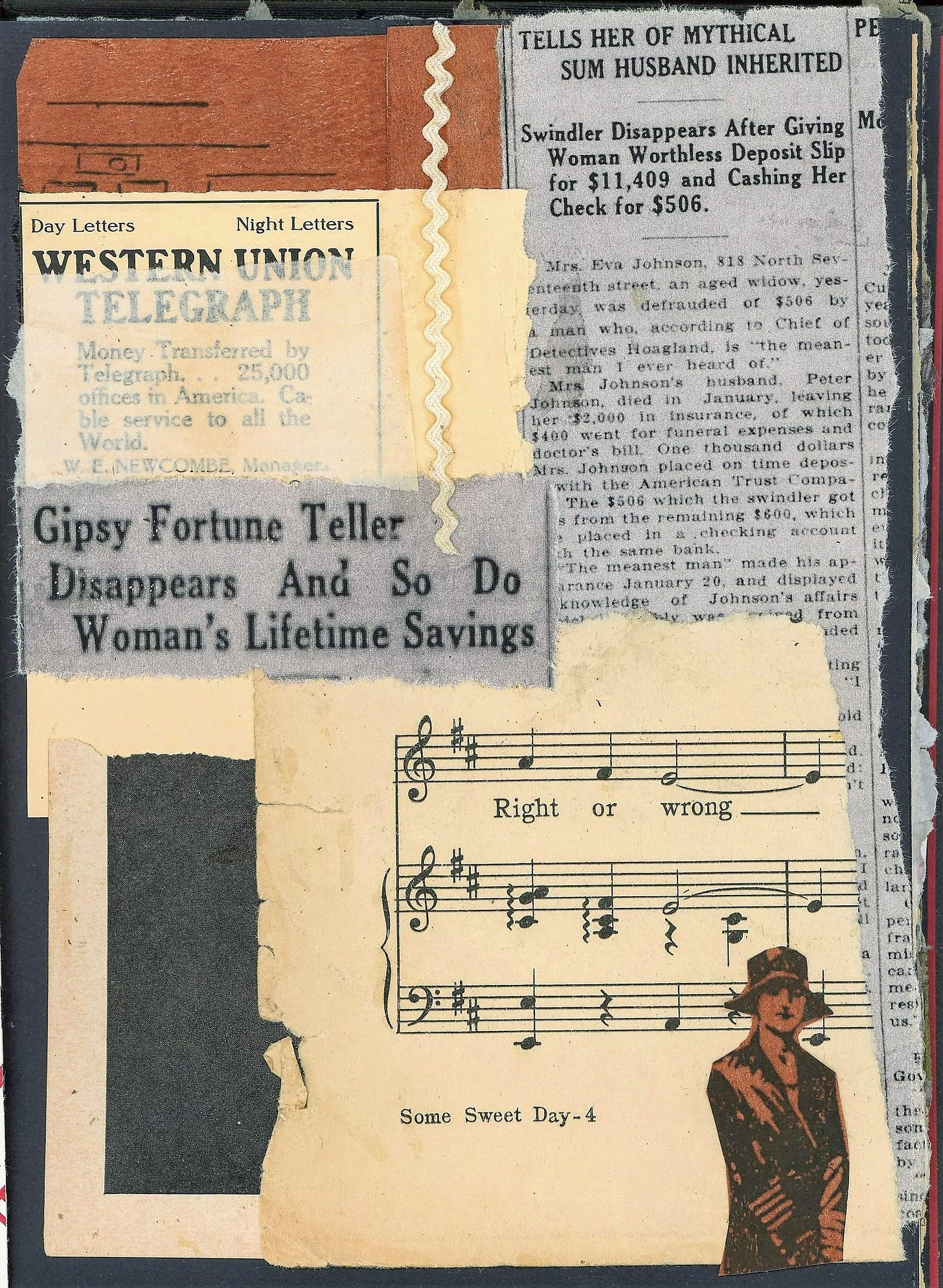

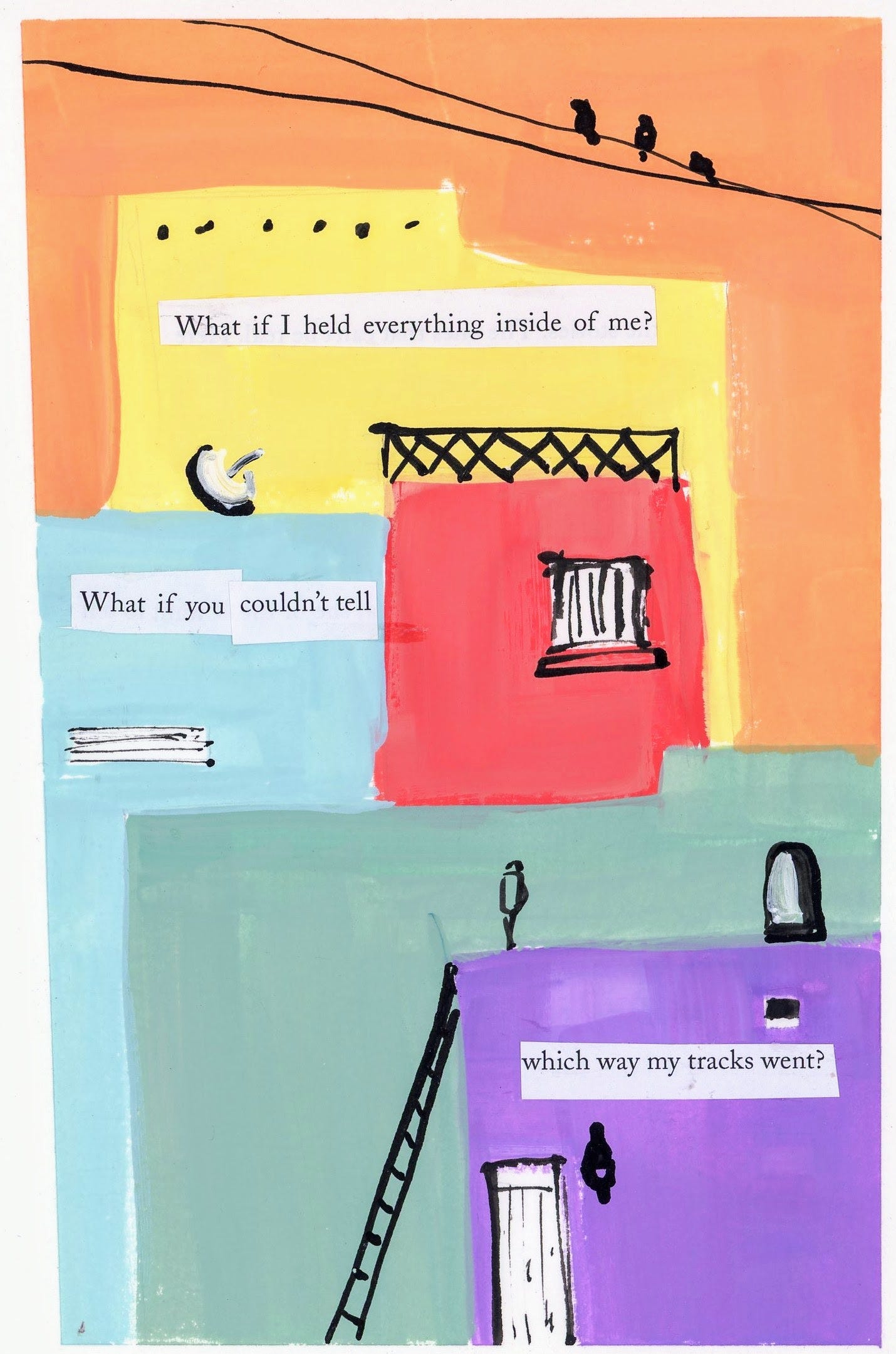

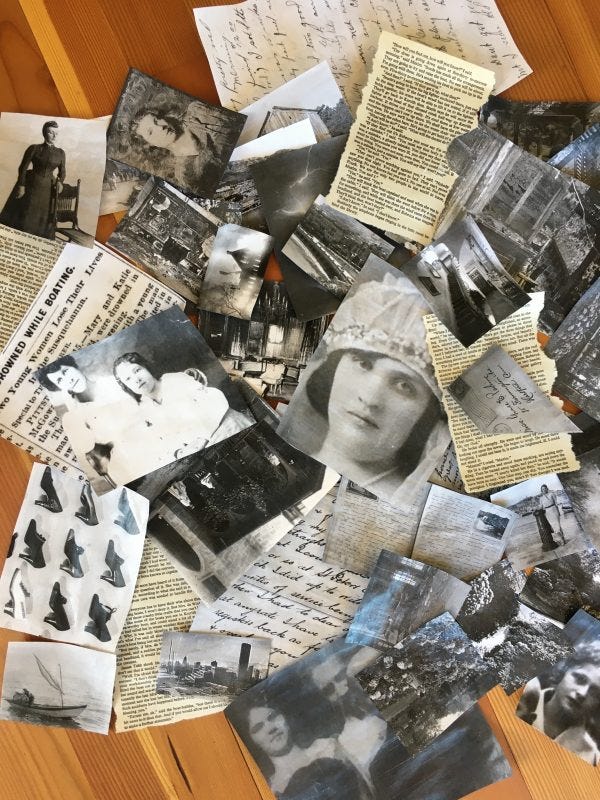

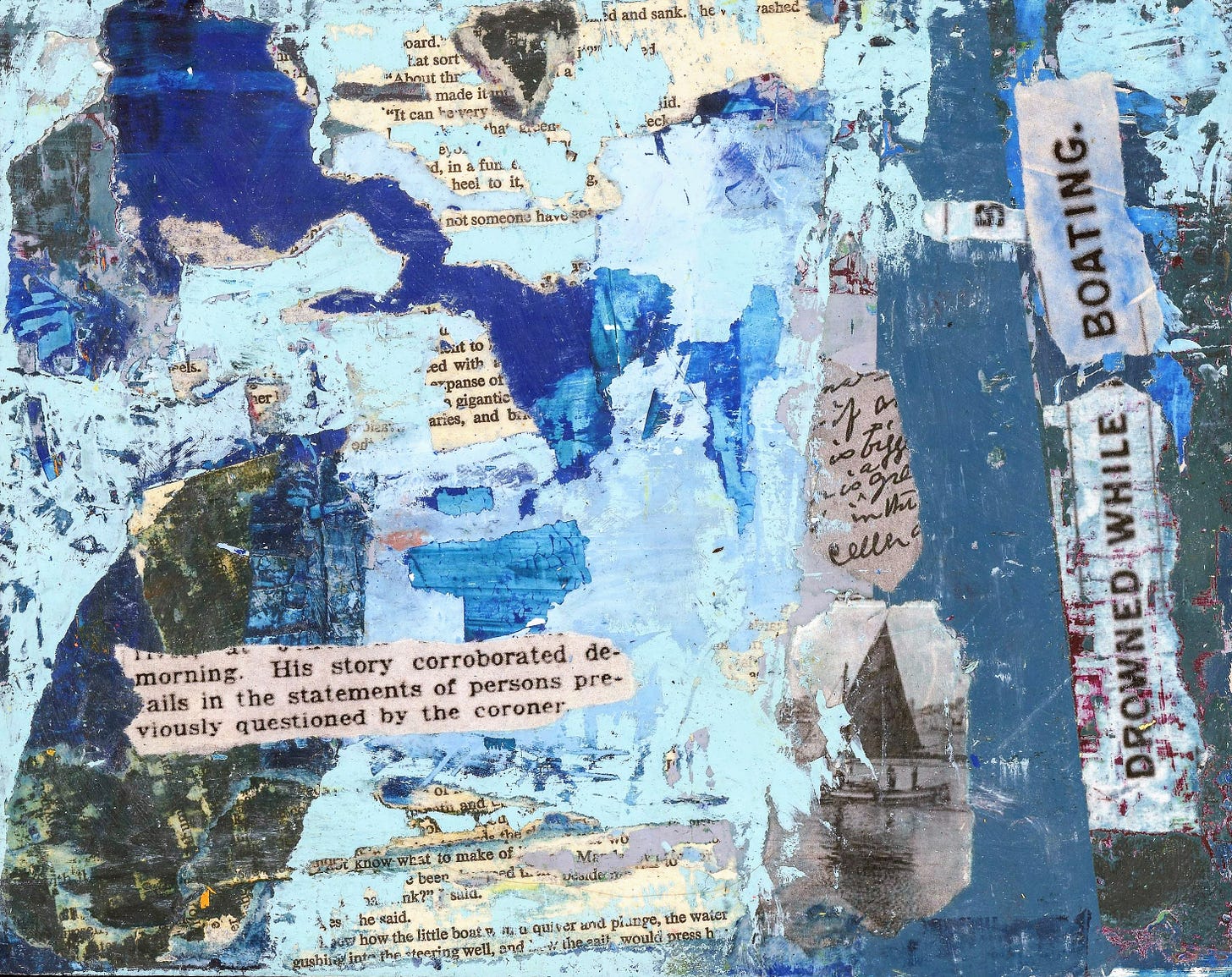
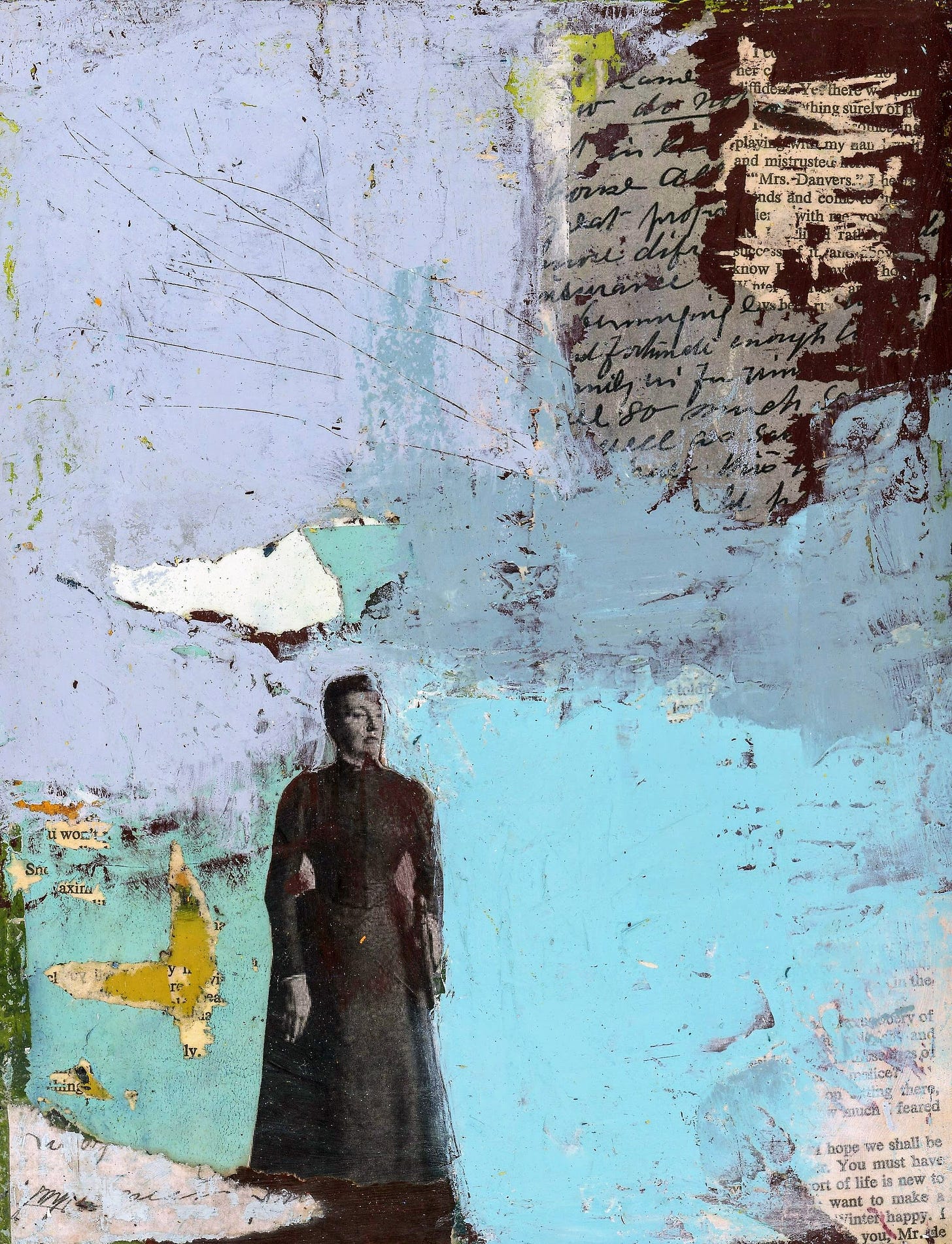

Amy, this is absolutely lovely. Since reading the book I've been very curious about how you did the research for it. 🙌
Fabulous!!